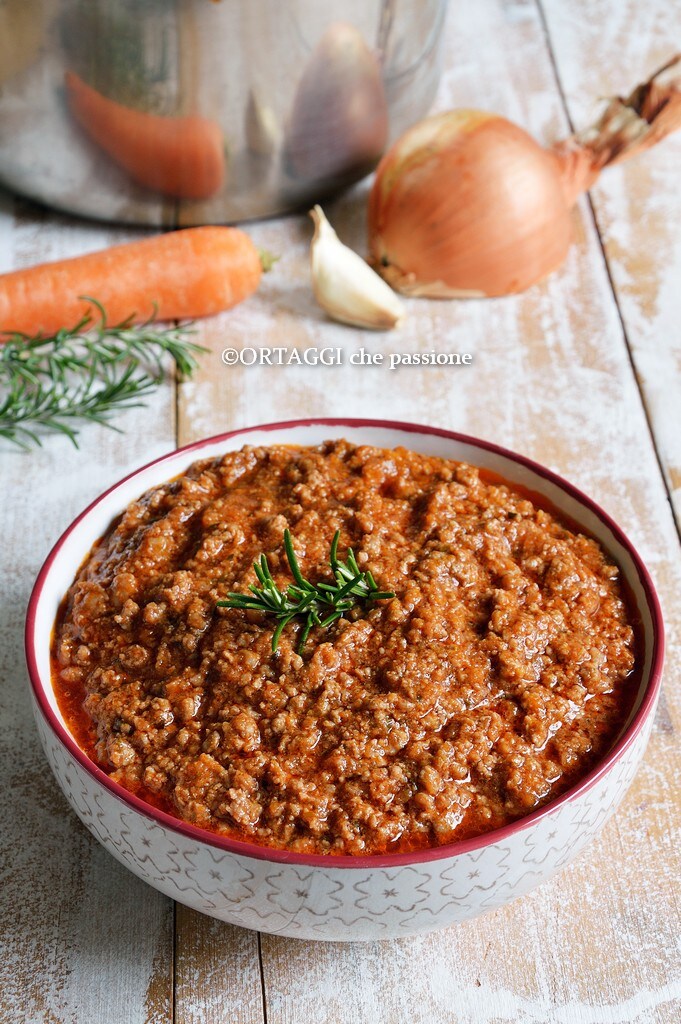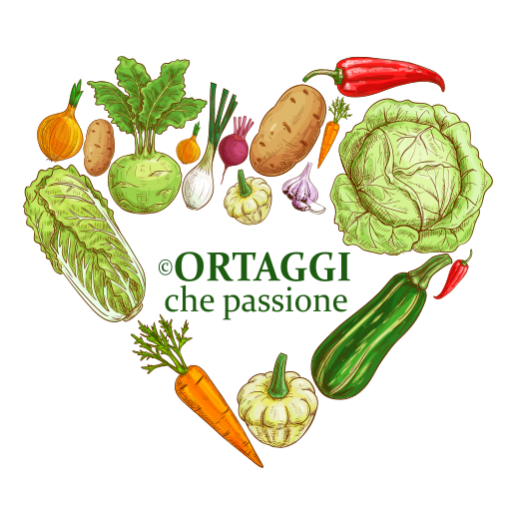The Creamy Ragu is the classic meat sauce, the most practical to freeze and always have on hand for unexpected guests. Everyone makes it their own way, this is my simple recipe in Bolognese style. Delicious.
For the registered Bolognese ragu recipe, see here.
For a white version, just don’t add the tomato or read here. The slow and prolonged cooking in the pan melts the naturally present fat and results in a creamy and enveloping ragu. Great for seasoning: pasta, gnocchi, lasagna, baked pasta, polenta, in Piedmontese, Neapolitan cuisine.
RECIPES of other types of ragu

- Difficulty: Easy
- Cost: Medium
- Preparation time: 15 Minutes
- Portions: about 3.3 lbs of ragu
- Cooking methods: Stovetop
- Cuisine: Italian
- Seasonality: All seasons
- Energy 202.01 (Kcal)
- Carbohydrates 3.93 (g) of which sugars 0.86 (g)
- Proteins 17.63 (g)
- Fat 12.37 (g) of which saturated 4.50 (g)of which unsaturated 6.20 (g)
- Fibers 0.83 (g)
- Sodium 531.99 (mg)
Indicative values for a portion of 100 g processed in an automated way starting from the nutritional information available on the CREA* and FoodData Central** databases. It is not food and / or nutritional advice.
* CREATES Food and Nutrition Research Center: https://www.crea.gov.it/alimenti-e-nutrizione https://www.alimentinutrizione.it ** U.S. Department of Agriculture, Agricultural Research Service. FoodData Central, 2019. https://fdc.nal.usda.gov
Creamy Ragu
- 2.2 lbs ground meat (of heifer or veal – not too lean)
- 1 drizzle peanut oil (or extra virgin olive oil)
- 1 onion
- 1 carrot
- Half stalk celery (or more)
- Half clove garlic (optional)
- Half glass wine (white or red)
- 14 oz tomato puree
- Half tsp paprika (or chili or curry)
- to taste rosemary (chopped)
- to taste Salt
if you like, add a dry bay leaf
Tools
- Cutting board and knife
- Pan with lid
- Ladle
How to make creamy and simple ragu
Wash and chop the vegetables (onion, carrot, garlic, and celery) or finely chop them with a food processor or the Thermomix.
In a saucepan, sauté all the vegetables with a drizzle of oil. Once dry, add the ground meat and brown it over high heat, stirring well to prevent lumps of meat from forming.
In alternative, for a tastier result and to allow the Maillard chemical reaction: in a large non-stick pan sauté the meat alone with very little oil. Once well browned, you can combine it with the pot with the vegetables.
Deglaze with the wine and then add: the herbs, the tomato pulp, and a little salt. Continue cooking over low heat, the sauce should only slightly simmer. Cover and cook for at least two hours, stirring occasionally. Only if necessary, add some warm water.
Sara’s tips
For a more intense flavor, replace part of the meat with sausage.
For a more aromatic taste, add some dried mushrooms or slices of truffle.
For an even more creamy result, add milk or cream at the end of cooking.
A good ragu, the more it cooks, the tastier it becomes.
Add the hot ragu to the pasta along with a drizzle of raw extra virgin oil.
How to STORE
Once cold, the creamy ragu can be stored in an airtight container:
– in the fridge for 3 – 4 days
– in the freezer for up to 3 months
How do you know when the ragu is ready?
The ragu is ready when the sauce is thick, the meat is tender, and the aroma is rich. The fat separates from the sauce, and the raw tomato’s acidic taste has disappeared. Slow cooking is essential.
How to soften ragu meat?
To soften ragu meat, it’s important to cook it slowly over low heat. Using a bit of liquid, like wine, broth, or water, helps keep the meat tender and juicy. Additionally, marinating the meat before cooking or choosing more suitable cuts, like neck or shoulder, can make a difference.
What meat to use for ragu?
For ragu, the ideal meat depends on the desired outcome. Generally, cuts of meat that become tender and flavorful with slow cooking are chosen. Beef is a common choice, but pork or sausage can also be used to add flavor and juiciness.
What is the best ragu?
The best ragu varies according to taste, but Bolognese ragu is one of the most loved. Prepared with beef and pork, a vegetable sauté, red wine, and tomato, it is cooked for a long time for a rich and deep flavor. Another highly appreciated version is the Neapolitan ragu, more robust and dense, with beef and sausage. In any case, the best ragu is the one prepared with passion and patience!

